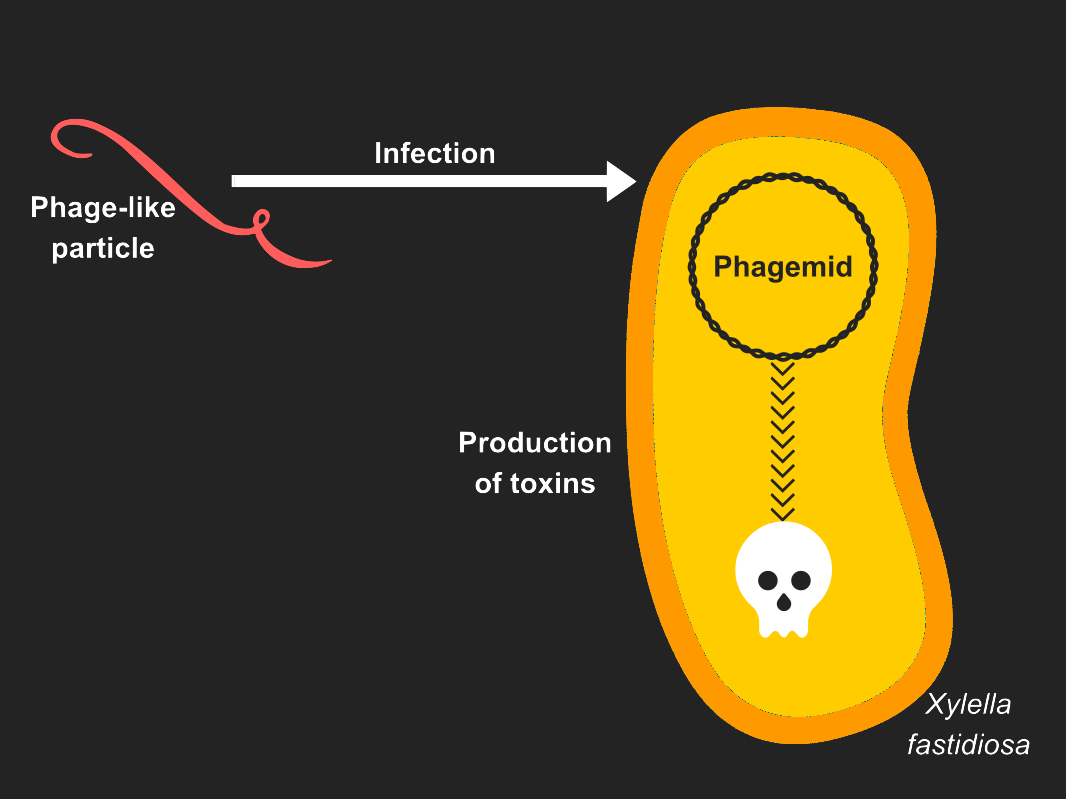| Line 4: | Line 4: | ||
| − | Bacteriophages play a special role in nanoscale cargo-delivery developments | + | Bacteriophages play a special role in nanoscale cargo-delivery developments because they can be regarded as naturally occurring nanomaterials. We chose to explore the Phage-like particles (PLPs) use against pathogenic bacteria like [[Team:Aix-Marseille/Xylella_fastidiosa|''Xylella fastidiosa'']] <ref>Roldão, A., Silva, A. C., Mellado, M. C. M., Alves, P. M. & Carrondo, M. J. T. Viruses and Virus-Like Particles in Biotechnology: Fundamentals and Applications. in Reference Module in Life Sciences (Elsevier, 2017). </ref>. Our goal is to use a phage like [[Team:Aix-Marseille/M13|M13]] to inject a lethal toxin into the bacterium. |
Phage systems, like [[Team:Aix-Marseille/M13|M13]], have been employed in biotechnological applications, most prominently in the identification and maturation of medically-relevant binding molecules through phage display <ref>Salmond, G. P. C. & Fineran, P. C. A century of the phage: past, present and future. Nat Rev Micro 13, 777–786 (2015).</ref>. The application of phages in materials and nanotechnology is mainly due to their nanoscale size and simple life cycles. We choose to use those application in our advantage in order to target [[Team:Aix-Marseille/Xylella_fastidiosa|''X. fastidiosa'']] <ref>Buttimer, C. et al. Bacteriophages and Bacterial Plant Diseases. Front. Microbiol. 8, (2017). </ref>. | Phage systems, like [[Team:Aix-Marseille/M13|M13]], have been employed in biotechnological applications, most prominently in the identification and maturation of medically-relevant binding molecules through phage display <ref>Salmond, G. P. C. & Fineran, P. C. A century of the phage: past, present and future. Nat Rev Micro 13, 777–786 (2015).</ref>. The application of phages in materials and nanotechnology is mainly due to their nanoscale size and simple life cycles. We choose to use those application in our advantage in order to target [[Team:Aix-Marseille/Xylella_fastidiosa|''X. fastidiosa'']] <ref>Buttimer, C. et al. Bacteriophages and Bacterial Plant Diseases. Front. Microbiol. 8, (2017). </ref>. | ||
| Line 10: | Line 10: | ||
==Phage-like particle design== | ==Phage-like particle design== | ||
| − | Bacteriophages are able to express their genomes and generate new copies of themselves <ref>Salmond, G. P. C. & Fineran, P. C. A century of the phage: past, present and future. Nat Rev Micro 13, 777–786 (2015).</ref>. We | + | Bacteriophages are able to express their genomes and generate new copies of themselves <ref>Salmond, G. P. C. & Fineran, P. C. A century of the phage: past, present and future. Nat Rev Micro 13, 777–786 (2015).</ref>. We chose to limit the phage ability to reproduce itself in order to contain it. As it is possible to produce recombinant phages that express foreign proteins, it is possible to restrain their capacity to reproduce themselves. <ref name= Silva>Roldão, A., Silva, A. C., Mellado, M. C. M., Alves, P. M. & Carrondo, M. J. T. Viruses and Virus-Like Particles in Biotechnology: Fundamentals and Applications. in Reference Module in Life Sciences (Elsevier, 2017).</ref> |
| − | Phage-like particles (PLPs) mimic the organization of native phages but lack the viral genome. They have been applied as vehicles in drug and gene delivery and as tools in nanobiotechnology <ref>Czapar, A. E. & Steinmetz, N. F. Plant viruses and bacteriophages for drug delivery in medicine and biotechnology. Current Opinion in Chemical Biology 38, 108–116 (2017). </ref>. In this project, we want to create [[Team:Aix-Marseille/M13|M13]] phage-like particles in order to inject | + | Phage-like particles (PLPs) mimic the organization of native phages but lack the viral genome. They have been applied as vehicles in drug and gene delivery and as tools in nanobiotechnology <ref>Czapar, A. E. & Steinmetz, N. F. Plant viruses and bacteriophages for drug delivery in medicine and biotechnology. Current Opinion in Chemical Biology 38, 108–116 (2017). </ref>. In this project, we want to create [[Team:Aix-Marseille/M13|M13]] phage-like particles in order to inject toxins in the bacterium. |
==Phage-like particle in the environment== | ==Phage-like particle in the environment== | ||
| − | More than just | + | More than just efficiency, we want our product to be clean, so that it doesn't leave any footprint or trace of its use in nature. Thus, we used soil samples to test the longevity of our phages in nature. We are also working with the [http://biam.cea.fr/drf/biam/Pages/laboratoires/lgbp.aspx LGBP lab], where we test our phage in the model organism ''Arabidopsis thaliana''. |
<div class="row-icons white-icons"> | <div class="row-icons white-icons"> | ||
Revision as of 14:51, 10 October 2017
Engineering bacteriophages
Bacteriophages play a special role in nanoscale cargo-delivery developments because they can be regarded as naturally occurring nanomaterials. We chose to explore the Phage-like particles (PLPs) use against pathogenic bacteria like Xylella fastidiosa [1]. Our goal is to use a phage like M13 to inject a lethal toxin into the bacterium.
Phage systems, like M13, have been employed in biotechnological applications, most prominently in the identification and maturation of medically-relevant binding molecules through phage display [2]. The application of phages in materials and nanotechnology is mainly due to their nanoscale size and simple life cycles. We choose to use those application in our advantage in order to target X. fastidiosa [3].
Phage-like particle design
Bacteriophages are able to express their genomes and generate new copies of themselves [4]. We chose to limit the phage ability to reproduce itself in order to contain it. As it is possible to produce recombinant phages that express foreign proteins, it is possible to restrain their capacity to reproduce themselves. [5]
Phage-like particles (PLPs) mimic the organization of native phages but lack the viral genome. They have been applied as vehicles in drug and gene delivery and as tools in nanobiotechnology [6]. In this project, we want to create M13 phage-like particles in order to inject toxins in the bacterium.
Phage-like particle in the environment
More than just efficiency, we want our product to be clean, so that it doesn't leave any footprint or trace of its use in nature. Thus, we used soil samples to test the longevity of our phages in nature. We are also working with the [http://biam.cea.fr/drf/biam/Pages/laboratoires/lgbp.aspx LGBP lab], where we test our phage in the model organism Arabidopsis thaliana.
References
- ↑ Roldão, A., Silva, A. C., Mellado, M. C. M., Alves, P. M. & Carrondo, M. J. T. Viruses and Virus-Like Particles in Biotechnology: Fundamentals and Applications. in Reference Module in Life Sciences (Elsevier, 2017).
- ↑ Salmond, G. P. C. & Fineran, P. C. A century of the phage: past, present and future. Nat Rev Micro 13, 777–786 (2015).
- ↑ Buttimer, C. et al. Bacteriophages and Bacterial Plant Diseases. Front. Microbiol. 8, (2017).
- ↑ Salmond, G. P. C. & Fineran, P. C. A century of the phage: past, present and future. Nat Rev Micro 13, 777–786 (2015).
- ↑ Roldão, A., Silva, A. C., Mellado, M. C. M., Alves, P. M. & Carrondo, M. J. T. Viruses and Virus-Like Particles in Biotechnology: Fundamentals and Applications. in Reference Module in Life Sciences (Elsevier, 2017).
- ↑ Czapar, A. E. & Steinmetz, N. F. Plant viruses and bacteriophages for drug delivery in medicine and biotechnology. Current Opinion in Chemical Biology 38, 108–116 (2017).




